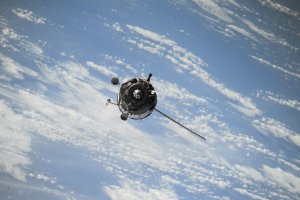“We’re now witnessing near-peer adversaries focusing on practicing dogfighting in space,” said General Michael Guetlein, vice chief of the US Space Force. “The space environment has completely transformed.”
According to Breaking Defense, Guetlein referred to the activities of five Chinese satellites, identified as Shiyan-24C and Shijian-6 05A/B, which conducted synchronized maneuvers in low-Earth orbit last year.
“With our commercial assets, we’ve tracked five different objects maneuvering in and out of formation, demonstrating synchronized and controlled movement,” Guetlein stated at the McAleese Annual Defense Programs Conference. “This is what we refer to as dogfighting in space. They are rehearsing tactics, techniques, and procedures to conduct on-orbit space operations involving one satellite engaging another.”
Guetlein also highlighted China’s previous success in using one satellite to physically “grapple” another, effectively giving them the capability to seize control of an opposing satellite.
China’s ongoing push to enhance its anti-satellite capabilities could potentially threaten SpaceX’s Starlink network and other US satellite systems. Chinese researchers have previously urged their government to explore methods to neutralize or disable Starlink due to its perceived surveillance capabilities.
At the same time, Russia has also expressed hostility toward Starlink, criticizing its role in providing broadband services to Ukraine. US officials have voiced concerns that Russia may be exploring the possibility of detonating a nuclear device in orbit, which could potentially disable US satellites.
General Guetlein emphasized the urgency of strengthening US space warfare capabilities. “There was once a significant capability gap between us and our adversaries, largely due to US technological superiority,” he noted. “However, that gap has narrowed considerably. If we don’t change how we approach space, that gap could disappear - and not in our favor.”
Newer Articles
- Verizon Expands Satellite-to-Phone Service for Everyday Messaging
- Microsoft Urges Windows 10 Users to Upgrade or Recycle PCs
- Amazon Announces Big Spring Sale for 2025 With Huge Discounts


